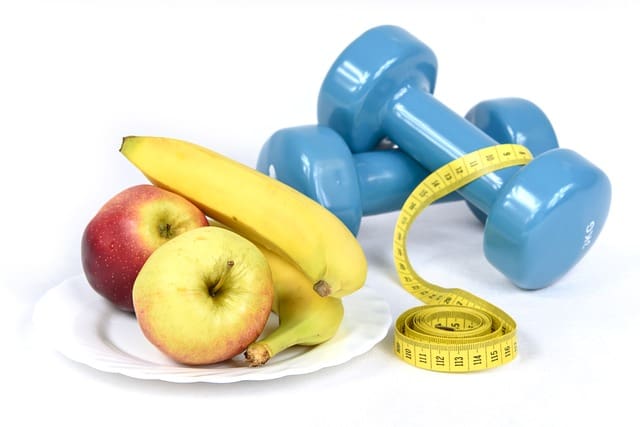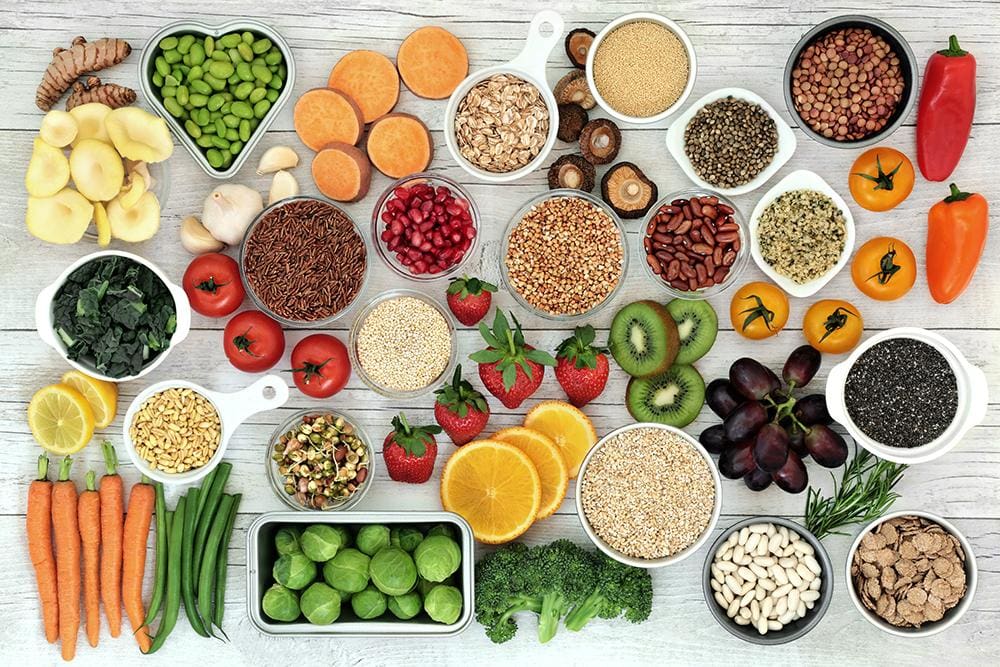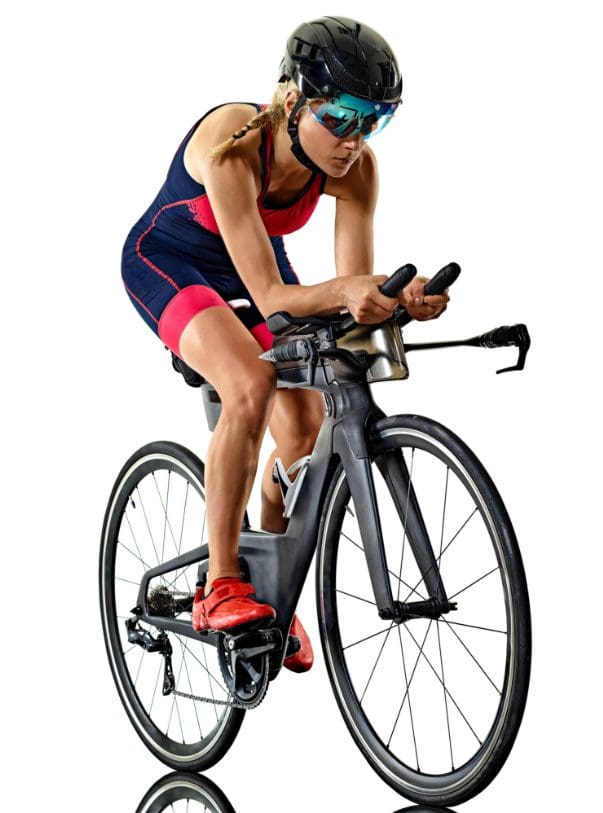Sports
10 Essential Energy Gels to Boost Your Endurance Performance


For athletes and endurance enthusiasts, finding the right energy gel can be a game-changer in sustaining performance levels during prolonged physical activity.
With an abundance of products on the market, it can be overwhelming to navigate the best options. However, the effectiveness of an energy gel extends beyond just the carbohydrate content.
Factors such as the gel’s composition, carbohydrate types, timing of consumption, inclusion of caffeine, absorption rate, and individual preferences play crucial roles in determining the most suitable option.
Additionally, considerations such as electrolyte content, energy density, and glycogen replenishment further contribute to the overall impact on endurance performance.
This comprehensive evaluation of essential energy gels aims to provide valuable insights into optimizing endurance performance, catering to the specific needs and preferences of athletes and fitness enthusiasts.


Key Takeaways
- Energy gels are composed of carbohydrates, electrolytes, and sometimes caffeine, providing a quick source of energy during physical activity.
- Timing of energy gel consumption is important for optimal performance, with recommendations of consuming gels before activity and every 45 minutes to an hour during activity.
- The absorption rate of energy gels is influenced by factors such as carbohydrate type, gel composition, and osmolality, which can impact endurance and results.
- Stomach tolerance and individual preferences play a role in energy gel selection, with athletes needing to experiment with different formulations and consider their dietary restrictions and taste preferences.
Gel Composition
Energy gels, commonly used by endurance athletes, are composed of a concentrated mixture of carbohydrates, electrolytes, and sometimes caffeine, designed to provide a quick and easily digestible source of energy during prolonged physical activity.
Carbohydrates are the primary fuel source for endurance exercise, and energy gels typically contain maltodextrin, glucose, fructose, or a combination of these to provide a rapid release of energy.
Electrolytes such as sodium, potassium, and magnesium are included to replace those lost through sweat and help maintain proper muscle function and hydration levels during prolonged activity.
Additionally, some energy gels incorporate caffeine, a stimulant that can enhance mental alertness and physical performance.
The combination of these components in energy gels makes them a convenient and efficient way for athletes to replenish their energy stores during long training sessions or competitions.
It’s important for individuals to consider their own nutritional needs and sensitivities when choosing an energy gel, and to experiment with different products during training to find the most suitable option for their performance and digestive comfort.


Carbohydrate Types
Comprising a variety of carbohydrate types, energy gels are formulated to provide a rapid and sustained source of energy for endurance athletes during extended physical exertion.
The carbohydrate types found in energy gels typically include glucose, fructose, maltodextrin, and sometimes other forms of sugar. Glucose is a fast-acting carbohydrate that provides quick energy to the muscles, while fructose is processed at a slightly slower rate, offering a more sustained energy release. Maltodextrin, a polysaccharide made up of multiple glucose molecules, provides a steady and enduring source of energy, making it a common component in energy gels.
These different carbohydrate types work synergistically to deliver a balanced and continuous supply of energy to the athlete during prolonged exercise, helping to maintain optimal performance levels.
It’s important for athletes to consider their individual preferences and tolerance for different carbohydrate types when selecting an energy gel. Some may find certain types of sugars more easily digestible and palatable than others. Experimenting with various energy gels during training sessions can help athletes determine which carbohydrate types work best for their unique physiology and performance needs.


Gel Timing
Given the importance of carbohydrate types in energy gels for endurance performance, understanding the optimal timing for consuming these gels during prolonged physical activity is crucial for maximizing their effectiveness. The timing of energy gel consumption can significantly impact an athlete’s performance and endurance during training or competition.
It is recommended to consume energy gels approximately 15 minutes before the start of prolonged physical activity to allow for the digestion and absorption of carbohydrates, which can provide a quick source of energy. During the activity, consuming energy gels every 45 minutes to an hour can help maintain blood glucose levels and provide a continuous source of fuel for working muscles.
It’s important to consume the gels with water to aid in absorption and prevent dehydration. Timing may vary depending on individual tolerance, the intensity of the activity, and environmental conditions. Athletes should experiment with timing during training sessions to determine the most effective schedule for their specific needs.
Proper timing of energy gel consumption can help athletes sustain energy levels, delay fatigue, and improve overall endurance performance.
Caffeine Inclusion
The inclusion of caffeine in energy gels has been a subject of interest due to its potential impact on endurance performance. Caffeine is a well-known ergogenic aid that has been shown to enhance endurance exercise performance. When included in energy gels, caffeine can provide a convenient and easily digestible form of this performance-enhancing substance.


Research suggests that caffeine can help delay fatigue, improve mental alertness, and increase the mobilization of fatty acids, which can spare glycogen stores during prolonged exercise. These effects can be particularly beneficial for endurance athletes during long training sessions or competitions.
However, it is important to note that individual responses to caffeine can vary, and some athletes may experience negative side effects such as increased heart rate, jitters, or gastrointestinal discomfort. Therefore, it is recommended that athletes experiment with caffeine-containing energy gels during training to determine their individual tolerance and response.
Additionally, considering the potential for habituation, it may be beneficial to strategically incorporate caffeine-containing energy gels into training and racing scenarios where the performance benefits are most needed.
Absorption Rate
The absorption rate of energy gels is a critical factor in their effectiveness for endurance performance. Understanding the speed of absorption, its impact on performance, and the various factors affecting absorption can provide valuable insights for athletes and individuals seeking to optimize their energy gel usage.
Speed of Absorption
Endurance athletes often seek to optimize the speed of absorption of energy gels to efficiently fuel their performance during prolonged physical exertion.


The speed of absorption refers to how quickly the nutrients from the energy gel enter the bloodstream and become available for use by the body. This is a critical factor for athletes, as the faster the absorption, the quicker the energy can be utilized to sustain endurance and performance.
Various factors can impact the speed of absorption, including the type and source of carbohydrates, the presence of proteins and fats, and the overall composition of the energy gel.
Understanding the speed of absorption of different energy gels can help athletes make informed choices to meet their specific performance needs and achieve optimal endurance results.
Impact on Performance
Optimizing the absorption rate of energy gels can significantly impact an athlete’s performance during prolonged physical exertion, influencing their ability to sustain endurance and achieve optimal results. The absorption rate of energy gels depends on various factors, including their carbohydrate composition and the presence of electrolytes, which can affect how quickly the body can utilize the energy provided.
Additionally, the osmolality of the gel can impact its absorption rate, as higher osmolality may slow down absorption. It’s crucial to consider the timing of energy gel consumption in relation to physical activity, as consuming gels too close to intense exertion may hinder absorption.
Understanding the impact of absorption rate can help athletes strategically use energy gels to maximize their endurance performance.
Factors Affecting Absorption
How do various factors, such as carbohydrate composition, electrolyte presence, and osmolality, influence the absorption rate of energy gels during physical exertion?
The absorption rate of energy gels is influenced by the type and concentration of carbohydrates present. Glucose and fructose, for example, are absorbed through different pathways, allowing for a greater overall absorption of carbohydrates when both are present in the gel.
Additionally, the presence of electrolytes like sodium can enhance the absorption of carbohydrates and water in the gut, aiding in hydration and energy delivery.
Osmolality, which refers to the concentration of particles in a solution, also plays a role in absorption. Energy gels with a similar osmolality to the body’s fluids are absorbed more rapidly, ensuring a quick and efficient delivery of energy during endurance activities.


Stomach Tolerance
Understanding the impact of energy gels on stomach tolerance is crucial for athletes seeking to optimize their performance during endurance activities. Stomach tolerance refers to an athlete’s ability to efficiently digest and absorb energy gels without experiencing gastrointestinal distress.
Several factors can influence stomach tolerance, including:
- Composition of Energy Gels: The ingredients in energy gels, such as different types of carbohydrates, electrolytes, and amino acids, can impact stomach tolerance. Athletes should experiment with various gel formulations to determine which ones are best tolerated during their training sessions.
- Timing of Consumption: The timing of energy gel consumption in relation to exercise can significantly affect stomach tolerance. Consuming gels too close to the start of the activity or in large quantities at once may lead to stomach discomfort, while spacing out smaller gel portions may enhance tolerance.
It is essential for athletes to consider their individual tolerance levels and practice their gel consumption strategy during training to ensure they can comfortably fuel their performance during endurance activities.
Individual Preferences
Considering the diverse physiological and sensory responses among athletes, individual preferences play a pivotal role in determining the most suitable energy gel formulations for optimizing performance during endurance activities. Athletes have unique tastes, dietary restrictions, and tolerance levels for certain ingredients. Therefore, finding an energy gel that aligns with individual preferences is crucial for sustaining energy levels and preventing gastrointestinal distress during prolonged exercise.
Some athletes may prefer energy gels with a thinner consistency, while others may favor thicker, more substantial gels. Additionally, flavor preferences vary widely, and some athletes may have specific dietary requirements, such as vegan or gluten-free options. It’s essential for athletes to experiment with different gel formulations during training to identify the products that best align with their individual preferences and digestive tolerances.


Furthermore, individual preferences extend beyond the gel’s composition and taste. Some athletes may prefer single-serve packets for convenience, while others may opt for bulk packaging to minimize waste and reduce cost. Considering these individual preferences can significantly impact an athlete’s overall experience and performance during endurance activities.
Ultimately, the key is to prioritize individual preferences while ensuring that the chosen energy gel provides the necessary carbohydrates, electrolytes, and other essential nutrients for optimal endurance performance.
Electrolyte Content
Energy gels play a crucial role in replenishing energy stores during endurance activities. Their electrolyte content is a key factor in their effectiveness. The sodium levels in energy gels help maintain fluid balance and aid in preventing cramping. Additionally, the presence of potassium is essential for muscle function and overall hydration. Understanding the electrolyte content of energy gels is essential for athletes and individuals engaging in prolonged physical exertion. This knowledge allows them to optimize performance and maintain proper hydration levels.
Sodium Levels
The electrolyte content, particularly the sodium levels, in energy gels plays a crucial role in supporting hydration and overall endurance performance during prolonged physical activity.
- Importance of Sodium Levels
- Sodium is a key electrolyte lost through sweat during exercise, and its replenishment is essential to maintain proper fluid balance and prevent dehydration.
- Adequate sodium levels help to enhance fluid absorption in the intestines, ensuring efficient hydration and sustained endurance during prolonged physical exertion.
Sodium levels in energy gels are a critical factor to consider when choosing the right product for your endurance activities. By ensuring optimal sodium replenishment, athletes can maintain peak performance and endurance, especially in demanding conditions. It’s important to select energy gels with sufficient sodium content to support your hydration needs during intense and prolonged workouts.
Potassium Balance
Potassium balance is a crucial aspect of the electrolyte content in energy gels. It contributes significantly to the maintenance of proper muscle function and overall fluid equilibrium during endurance activities.
Potassium, an essential mineral and electrolyte, plays a vital role in regulating muscle contractions, nerve signals, and fluid balance in the body.
During prolonged exercise, potassium is lost through sweat, and its depletion can lead to muscle cramps, fatigue, and impaired performance. Therefore, energy gels formulated with adequate potassium levels can help replenish this crucial electrolyte, supporting optimal muscle function and preventing dehydration.
Maintaining potassium balance is especially important for endurance athletes, as it can enhance endurance capacity and overall performance. When choosing energy gels, considering their potassium content is essential for sustaining electrolyte balance during prolonged physical exertion.
Energy Density
High energy density in sports nutrition products is a key factor in providing efficient fuel for endurance athletes during prolonged exercise. Energy density refers to the amount of energy (calories) per gram of a food or supplement.


For endurance athletes, the energy density of their nutrition is crucial for sustaining energy levels during long training sessions or competitions. Here are some key points to consider regarding energy density in sports nutrition products:
- Energy-dense gels and chews are convenient for athletes, as they provide a high amount of calories in a small serving size, making them easy to consume during intense physical activity.
- This is especially beneficial for endurance athletes who need to maximize their energy intake without feeling weighed down by large or heavy meals.
- Choosing products with a high energy density can help athletes meet their calorie needs efficiently, supporting optimal performance and preventing fatigue during extended workouts or competitions.
Glycogen Replenishment
Adequate glycogen replenishment is essential for optimizing an athlete’s recovery and preparing for subsequent endurance activities. Glycogen, the storage form of glucose in muscles and the liver, serves as a vital energy source during prolonged physical exertion. Endurance activities deplete glycogen stores, and timely replenishment is crucial for sustained performance. Energy gels play a key role in this process, as they provide a quick and convenient source of carbohydrates to facilitate glycogen replenishment during and after exercise.
After a prolonged endurance activity, consuming energy gels with a high carbohydrate content can effectively kickstart the replenishment of glycogen stores. It is generally recommended to consume 30-60 grams of carbohydrates per hour during prolonged exercise to maintain glycogen levels. Once the activity is completed, consuming an energy gel alongside a source of protein can further support glycogen replenishment and muscle recovery.
The type of carbohydrates in the energy gel, such as glucose or maltodextrin, can impact the rate of glycogen synthesis, with glucose being the preferred source for rapid replenishment.
Frequently Asked Questions
Can Energy Gels Be Used as a Replacement for Regular Meals During Endurance Events?
Energy gels can provide quick, easily digestible fuel during endurance events, but they should not replace regular meals. They are designed to supplement, not substitute, proper nutrition for sustained energy and performance.
Are There Any Potential Side Effects or Risks Associated With Consuming Energy Gels?
Consuming energy gels may lead to potential side effects such as gastrointestinal distress, dehydration, and spikes in blood sugar levels. It is essential to carefully manage intake and consider individual tolerance to avoid adverse effects.
Can Energy Gels Be Used in Combination With Other Sports Nutrition Products, Such as Protein Bars or Electrolyte Drinks?
Yes, energy gels can be effectively used in combination with other sports nutrition products like protein bars or electrolyte drinks to optimize performance and recovery. This strategic combination can provide the necessary fuel and nutrients for sustained endurance.
Are There Any Specific Recommendations for Using Energy Gels in Hot or Cold Weather Conditions?
In hot weather conditions, it’s crucial to stay hydrated and consider using energy gels with higher electrolyte content. In cold weather, opt for gels with a lower viscosity to ensure they don’t freeze.
How Do Different Flavors of Energy Gels Impact Their Effectiveness During Endurance Activities?
The effectiveness of different flavors of energy gels during endurance activities is influenced by individual taste preferences, gastrointestinal tolerance, and the specific carbohydrate composition. These factors can impact energy absorption and overall performance.


Hi, I’m Kyle Rivera, a news journalist and blog editor with the Daily Evening News. A TCU alum with a flair for storytelling, I spend my days uncovering impactful stories and my evenings exploring the realms of yoga, cycling, and whimsically bad poetry.
Travel is my escape; I’ve trekked from Tokyo’s neon lights to Iceland’s tranquil vistas. But no journey is complete without Mogli, my Golden Retriever, who’s redefining his breed standards in the most charming ways.
I love connecting with fellow travelers, yogis, cyclists, and anyone who enjoys a laugh at my poetic attempts. If you’re into stories that inspire, travel escapades, or just want to see what Mogli and I are up to, I’d love to hear from you on Instagram or Facebook. Let’s share tales and tips from around the globe!

